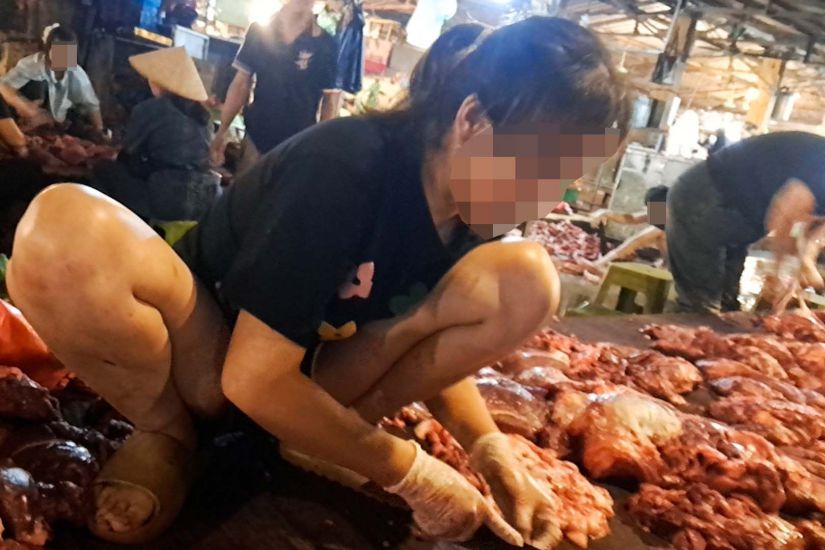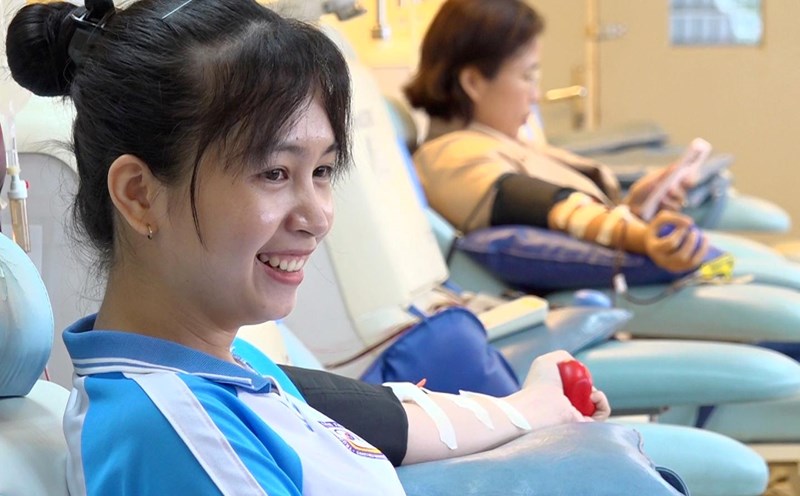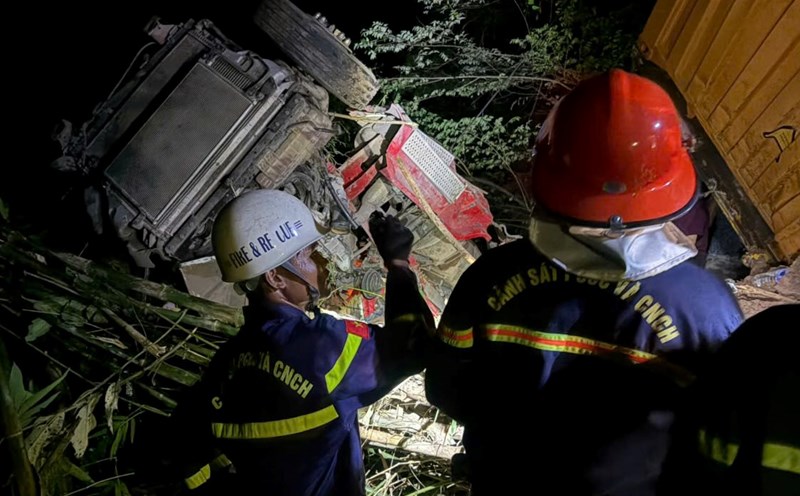Inside the pig slaughterhouse area, there are signs of infection
In early July, playing the role of traders needing cheap meat sources, a reporter from Lao Dong Newspaper penetrated Hai Boi unit market (near Thang Long bridge, Hanoi), one of the largest meat transit points in the capital. This area is famous for two "underground" surgery kilns operating at night, Mr. Em's kiln and Mrs. Thu's kiln.
Without signs or signs of the quarantine force, Mr. Em's slaughterhouse (at No. 19, at the end of a small alley adjacent to Ve Bridge, on Anh Dung Street) is a place containing dozens of pigs waiting to be slaughtered.
Here, the reporter witnessed a series of sows lying on dirty soil, unable to stand on their own.
"He just had a sore leg," Mr. Em (the operation room owner) reassured, then calmly took the reporter into the slaughter area.
The scene inside the slaughterhouse makes people feel cold: The walls of the house are covered with dry blood, the floor is covered with soil, the barn is damp with pigs lying around, some are motionless, others breathe weakly in a state of exhaustion. They have red spots as big as a stick.
"That was a mosquito bite", Mr. Em replied when asked about the pigs' condition. But then, Mr. Em frankly admitted: "Currently, in this slaughterhouse, there is only one vehicle of healthy pigs, the rest are sick pigs".
Although not quarantined, meat from Mr. Em's oven is still brought to the market with full " slaughter control fee" receipts, documents issued by the Hanoi Department of Animal Husbandry, Fisheries and Veterinary Medicine (under the Hanoi Department of Agriculture and Environment).
Mr. Em said: "There is no quarantine stamp here, because the pigs have lost their skin. But with a receipt, the meat can be moved.
Right next to Mr. Em's wall is Mrs. Thu's surgery area, of similar scale. A young man working at this slaughterhouse confirmed: "I see that the pigs are weak."
Here, it is not uncommon to let sick pigs be slaughtered without publicity, because this man said that as long as the "value is affordable", any pig can be eaten.

Suspectedly infected pork easily falls into the control net
In the early morning, the reporter returned to the two operating rooms. Through observation, the pigs suspected of being infected were recorded from the previous afternoon to have their meat cut on the spot, the rough skin with redness was peeled off, the meat, fat and bones were carefully filtered and then moved to consumption. The au au red meat balls were then gathered in many places, including Hai Boi unit market, which was openly sold as "clean" goods.
Ms. Thu's stall is one of the largest selling points here. When the reporter mentioned putting sick pigs in the slaughterhouse, Ms. Thu forced the price: "I import weak pigs for 20,000 VND/kg. As for healthy pigs, the price is different, much higher".
According to regulations, the slaughter process must be supervised by the veterinary force, and meat brought to the market must have clear quarantine markings. However, at the two slaughterhouses mentioned above, the entire process was ignored. Instead, just one fee receipt is enough to "circumvent the law".
In a previous interview with reporters, Mr. Em revealed that the person issuing the receipt was... his friend. It is this personal relationship that has become the key " chain" to help the number of suspected infected pork products go to the market, then reach consumers. During the recording process of Lao Dong Newspaper reporters, no functional forces appeared at the scene. No one checks the quality of the meat before leaving the oven, there are no quarantine markings, no monitoring measures.











